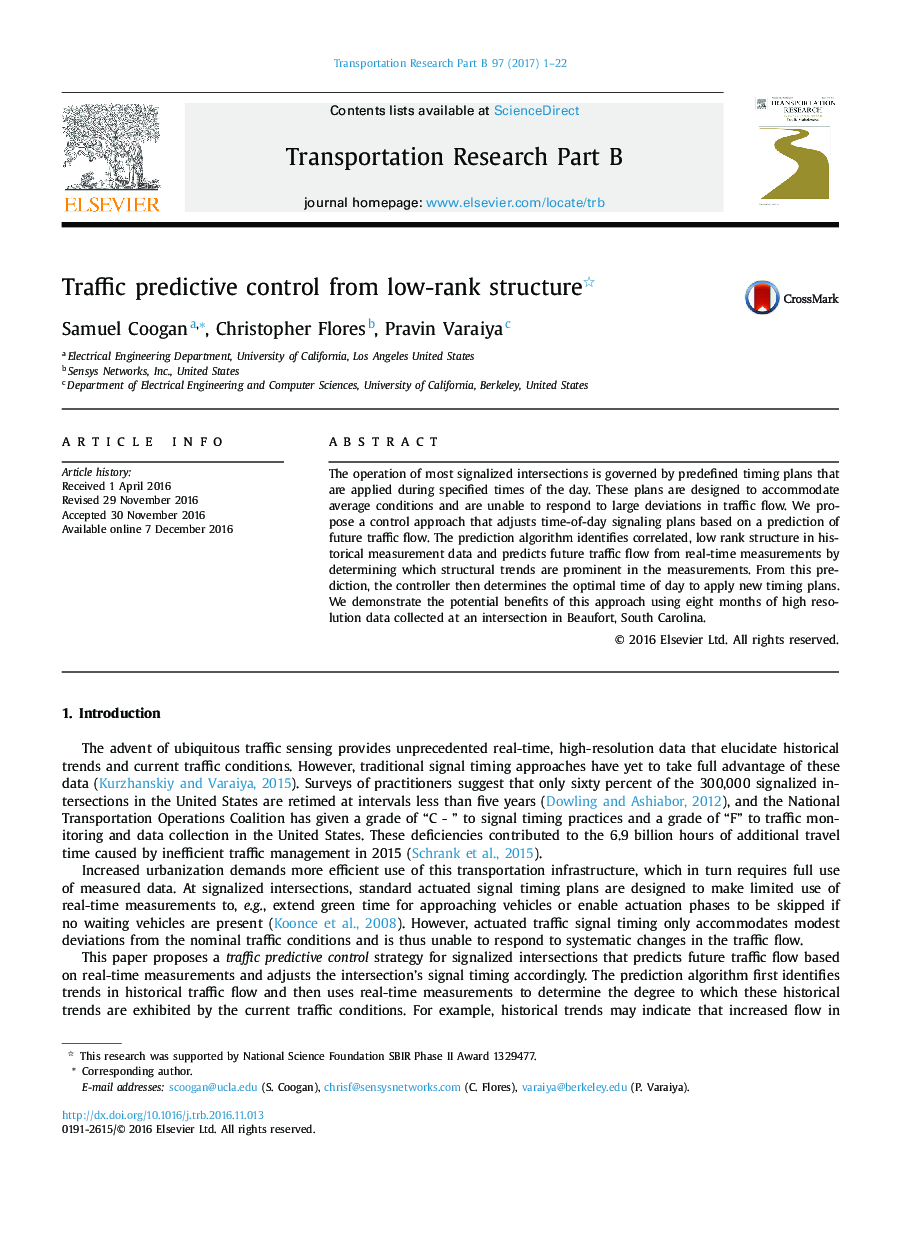| Article ID | Journal | Published Year | Pages | File Type |
|---|---|---|---|---|
| 5127073 | Transportation Research Part B: Methodological | 2017 | 22 Pages |
â¢High dimensional traffic flow data exhibits correlated, low-rank structure that is uncovered through statistical decomposition algorithms.â¢Identifying this low-rank structure in historical traffic flow data enables real-time traffic flow prediction.â¢Predicted traffic flow is used to adjust the timing parameters at a signalized intersection to reduce delay.â¢Results from data collected at one intersection suggest potential delay savings of 7.8 veh h per day, amounting to $57,000 savings per year.
The operation of most signalized intersections is governed by predefined timing plans that are applied during specified times of the day. These plans are designed to accommodate average conditions and are unable to respond to large deviations in traffic flow. We propose a control approach that adjusts time-of-day signaling plans based on a prediction of future traffic flow. The prediction algorithm identifies correlated, low rank structure in historical measurement data and predicts future traffic flow from real-time measurements by determining which structural trends are prominent in the measurements. From this prediction, the controller then determines the optimal time of day to apply new timing plans. We demonstrate the potential benefits of this approach using eight months of high resolution data collected at an intersection in Beaufort, South Carolina.
